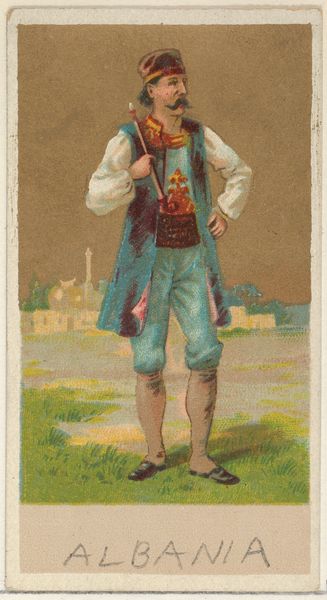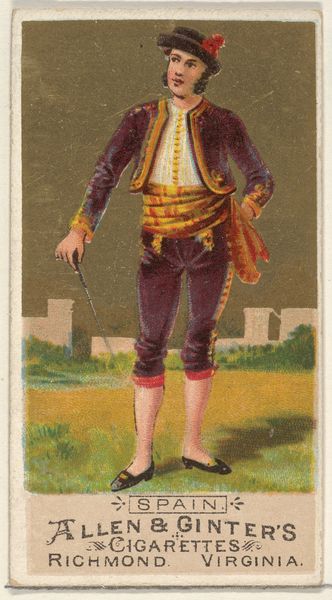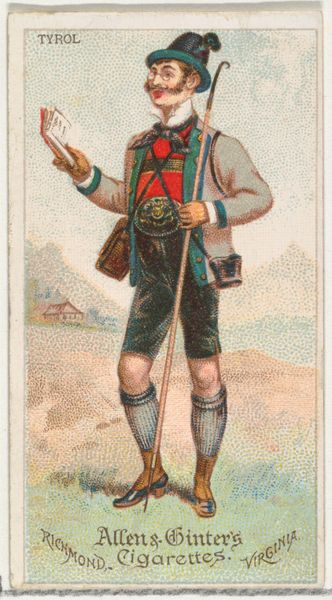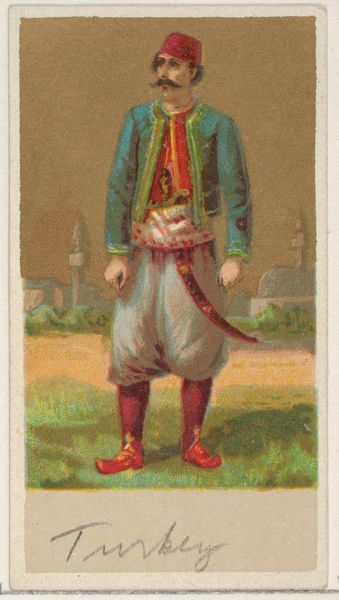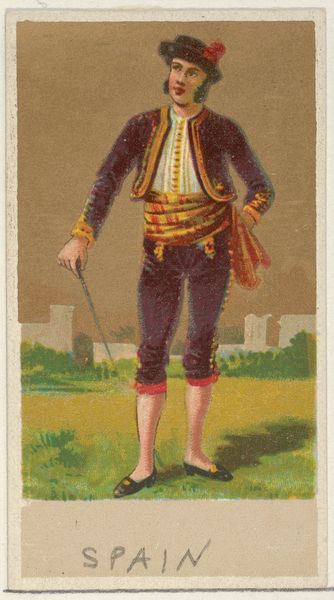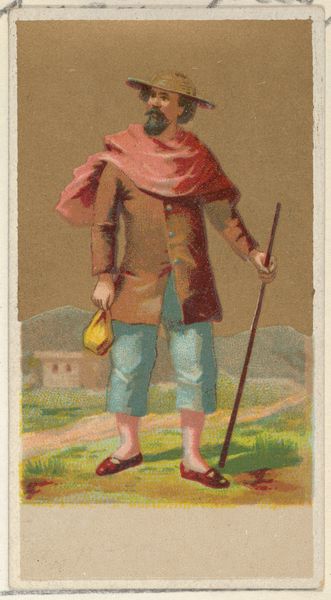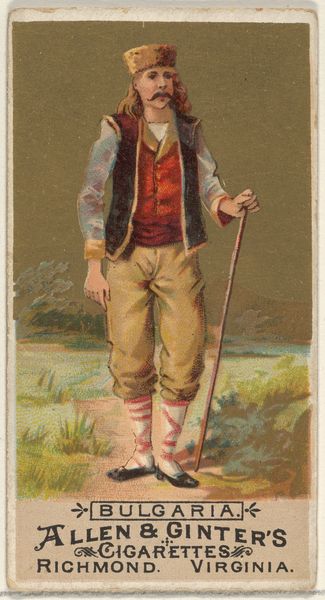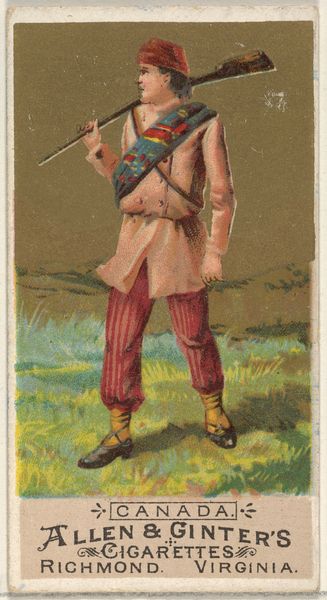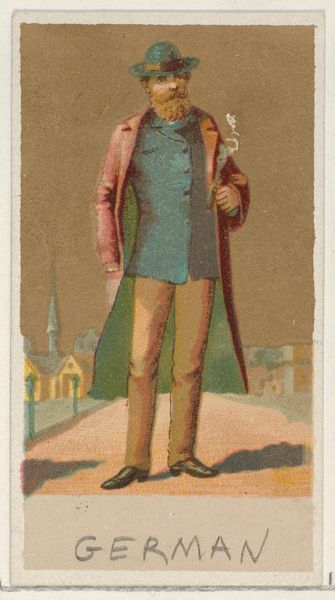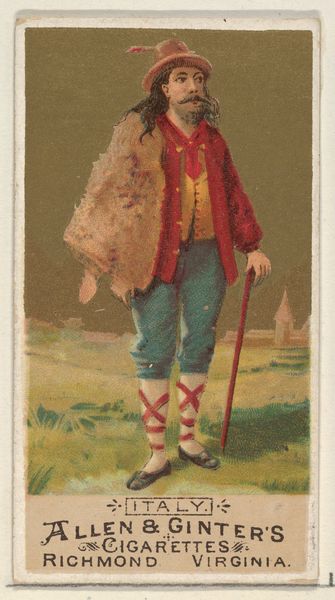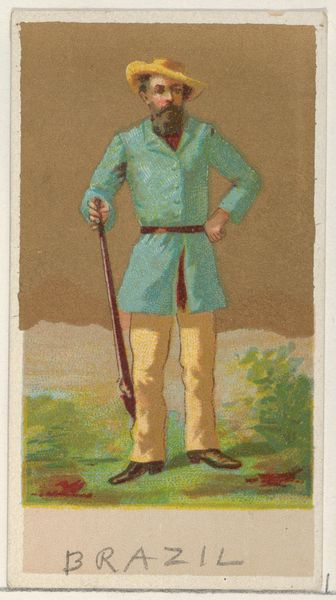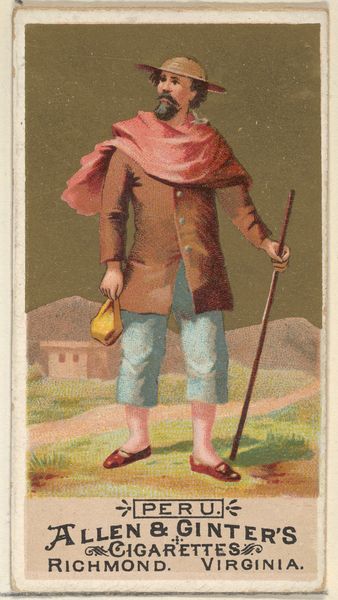
Albania, from the Natives in Costume series (N16) for Allen & Ginter Cigarettes Brands 1886
0:00
0:00
drawing, print
#
drawing
#
aged paper
#
toned paper
#
pasteup
#
antique
# print
#
handmade artwork painting
#
oil painting
#
coloured pencil
#
19th century
#
men
#
watercolour illustration
#
watercolor
Dimensions: Sheet: 2 3/4 x 1 1/2 in. (7 x 3.8 cm)
Copyright: Public Domain
Editor: Here we have "Albania, from the Natives in Costume series" created around 1886 by Allen & Ginter. It’s a drawing and a print meant for Allen & Ginter Cigarettes. I find the subject’s gaze quite striking for what is essentially a promotional image. What strikes you about this piece? Curator: What immediately grabs my attention is the colonial gaze inherent in such series. These “Natives in Costume” sets weren't created to celebrate cultural diversity, but rather to exoticize and categorize people from different parts of the world for a Western audience. Editor: So it's less about accurate representation and more about... consumption? Curator: Precisely. Consider the socio-political climate of the late 19th century. Imperialism was at its peak. The West was obsessed with classifying and controlling other cultures. Allen & Ginter were leveraging that fascination to sell cigarettes. It presents a romanticized view of Albania that likely ignored the complexities and hardships of life there. The choice of medium – a print meant for mass distribution – reinforces this objective. It was designed to be accessible and appealing to a broad consumer base. Editor: That’s… unsettling. It makes you wonder what other cultural shortcuts they’re taking. Curator: Indeed. Ask yourself, who is benefitting from this image, and what ideas about Albanian identity are being reinforced, however subtly? How does the inclusion of ‘Albania’ within an ‘American’ consumer object reflect global power dynamics at the time? Editor: I didn't expect a cigarette card to be so loaded. I see now it’s not just about the aesthetically pleasing colours, but how the image participated in a much larger narrative. Thank you! Curator: My pleasure. It is important to critically analyze these types of commercial objects to unravel their cultural significance within their historical context.
Comments
No comments
Be the first to comment and join the conversation on the ultimate creative platform.
